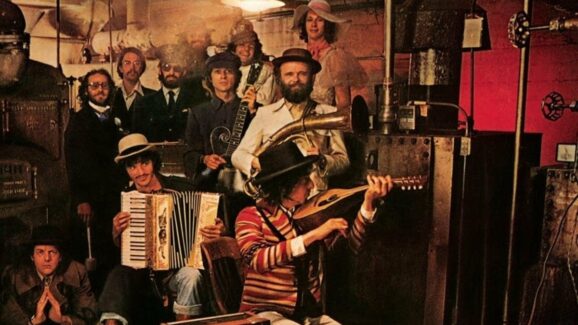The Grateful Dead’s embrace of serendipity often extended beyond the improvisation journeys they embarked upon while inhabiting the concert stage. Witness the conception and execution of the “Wall of Sound,” the pinnacle of the band’s pursuit of optimum audio in a live setting, or their initiation of an independent record label, by which they could maintain quality standards in manufacturing and distributing as high as those to which they aspired in writing and recording.
Long before the debut of that enterprise, however, the band discovered the multi-faceted creative tool at their disposal that was the recording studio and now, half a century later, some of the earliest results of their exploration(s) of those resources arrive in the form of Aoxomoxoa 50th Anniversary Deluxe Edition. Like previous such packages, this two-CD set contains multiple mixes of the studio album plus previously-unreleased live recordings completed around that same time.
The concert recordings are culled from three shows at the Avalon Ballroom in San Francisco in January 1969. Taken some months after the fateful meeting the previous August that was prelude to autumn shows billed as Mickey and The Hartbeats— notable for the absence of Bob Weir and Pigpen– these are among first live performances ever to be recorded to 16-track tape. So, even as the clarity bespeaks such innovation as a cornerstone of the Grateful Dead oeuvre, it is an also an asset in and of itself for this package, one further echoed in musicianship that finds the band at full strength in more ways than one.
“New Potato Caboose” is one second shy of fourteen minutes duration, keyboardist Tom Constanten’s fleeting but noticeable nonetheless especially on “Clementine” (in its final live performance), while a near-ten minute “Death Don’t Have No Mercy” closes this hour-plus set, its traditional source in contrast to the Phil Lesh songwriting collaborations present that actually outnumbers those of what would come to be the band’s chief source of original compositions, Jerry Garcia and Robert Hunter. The latter team composed ”Dupree’s Diamond Blues” and “Doin’ That Rag,” the prevalent old-timey feel juxtaposed with and effectively contrasting the randy persona of Ron “Pigpen” McKernan on “Alligator;” with a snappy percussion interlude there courtesy Hart and Bill Kreutzmann), not to mention the exploratory likes of “Caution (Do Not Stop On Tracks)” and “Feedback,” the nonchalance emanating from these performances belie the tension permeating the band late in 1968.
That aforementioned songwriting partnership would eventually become most prolific, its fruits prominent with the reappearance on Aoxomoxoa of the two aforementioned numbers along with the inclusion of “St. Stephen” (completed with the help of bassist) plus the perennial “China Cat Sunflower.” The results of those laborious sessions, the most protracted studio endeavors in Grateful Dead history, appear here in both the original 1969 mix and one overseen by Garcia two years later; like the live work, the original engineering involved Bob Mathews and (The) Betty Cantor, with mastering done by David Glasser and the Plangent Processes supervised by Jamie Howarth for this 50th Anniversary Deluxe Edition.
Not surprisingly, with engineer extraordinaire Jeffrey Norman applying his customary expertise to the content on CD two, these sonics are impeccable in their respective versions, both of which appear on a single compact disc. On the former, vocals are little more prominent than subtleties like a harpsichord on “Mountains of the Moon,” while the subsequent one does little to erase how dated sounds “What’s Become of the Baby.” Nevertheless, the extra volume and presence of the latter sublimates much of the fey quality that pervades the album’s material, rendering this subsequent mix– about which the titular leader of the band expressed some misgivings– a legitimate alternative to its predecessor.
The essay authored by Nicholas G. Meriwether, the Grateful Dead Archivist at UC Santa Cruz, might well have been half or two-thirds its length (and in that truncated form perhaps begun with its final paragraph). Still, in its somewhat overly dense and complicated syntax, it does mirror the music he is writing about (as does the 3D imaging of Rick Griffin’s original artwork). Replications of photos and internal business documents in the enclosed booklet, plus Warner Bros. advertising for the album, complete an Aoxomoxoa package that, like its palindrome of a title, accurately denotes the 50th Anniversary milestone it represents as well as the Deluxe Edition appellation affixed to its title.









